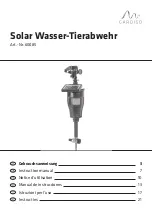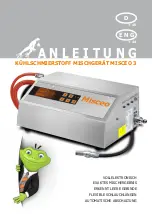
Page
20
AN-X2-ABDHRIO Remote I/O Drive Interface
February 2013
Remote I/O Templates
Remote I/O template files are comma-separated values (CSV) text files. Fields can be
separated by commas or spaces. The file name usually begins with RioDef_ although that
isn
’
t required. The file extension must be .csv
Remote I/O template files contain:
•
the name of the template file for the Ethernet drive
•
mappings between remote I/O and Ethernet data, possibly including scaling
information
IMPORTANT!
The I/O group is relative to the start of the rack to which the template is
applied.
If the rack to which the template is applied is a quarter rack located at the
end of the rack, then the rack occupies I/O groups 6 and 7. A remote I/O
template file that contains an I/O address with I/O group 0 then refers to
I/O group 6 in the rack.
If that same template file is used for a rack that starts at I/O group 2, an
I/O address with I/O group 0 then refers to I/O group 2 in the rack.
Multiple drives defined at different starting remote I/O addresses can use
the same template file if the data mappings are the same.
You can make changes in the template file and all drives using that
template will use the change (once you restart the AN-X).
Ethernet Template File Name
Include a line with the keyword Template, followed by the name of the Ethernet template
file that defines the data on the Ethernet drive.
Ethernet template files usually start with EthDef.
AN-X appends the extension .csv Do not include it in the name
The contents of the Ethernet template file are described in a later section.
Data Mappings
There are two sections of the remote I/O template file, one for input mappings and the
other for output mappings.
Input Mappings
The input mapping section begins with a line with just the keyword Inputs and ends with
a line with just the keyword EndInputs.
Mappings consist of the input word or bit address, a space, the symbol <-, a space, and
the Ethernet tag name from the Ethernet template file (see page 24)
Word addresses consist of I:n, where n is the I/O group, from 0 to 7.
Bit addresses consist of I:n.b, where b is the bit number, from 0 to 17 octal.
















































